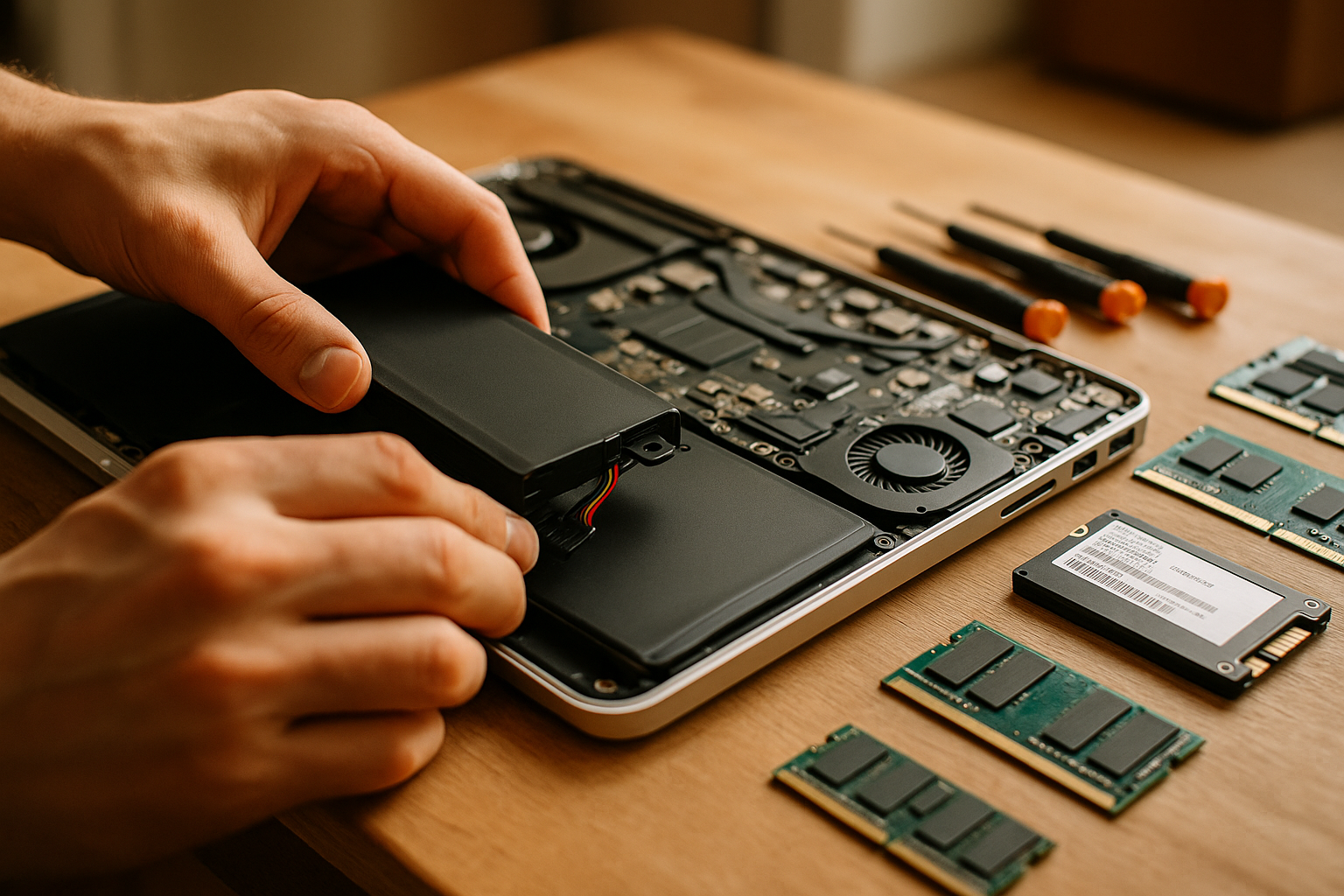Stop Planned Obsolescence, Cut E-Waste

Every year, millions of phones, laptops, and gadgets hit landfills not because they stopped working, but because a simple fix felt too expensive or impossible. That choice adds up. The planet now faces a mounting pile of discarded electronics, and much of it could have stayed in use. Planned obsolescence, the practice of designing products with limited lifespans, fuels this cycle by nudging people toward replacement instead of repair. New policies and smarter design are starting to change the equation, making it easier and cheaper to keep devices running for years instead of months. This article shows how repair, better rules, and long-term thinking can shrink the waste mountain and put you back in control of the tech you own.

Why obsolescence creates mountains of e-waste
Planned obsolescence shortens the useful life of products, encouraging consumers to replace instead of repair. When manufacturers make parts hard to find, glue components shut, or skip repair manuals, even minor failures turn into e-waste. The numbers tell a stark story. In 2022 the world generated about 62 million tonnes of electronic waste, yet only around 22 percent was formally recycled. That means roughly four out of five discarded devices never reach proper collection or recovery systems.
Europe leads with higher documented collection rates, but even countries with ambitious targets often miss them. The gap between policy and reality shows how difficult it is to capture e-waste when repair is expensive or inconvenient. When a simple battery swap costs as much as a new device, people throw away what could have been fixed. Every device that ends up in the bin represents raw materials, energy, and labor lost to the landfill instead of staying in circulation.
Why fixing things is harder than it should be
Missing manuals, pricey parts, and glued designs can make straightforward fixes feel impossible. Consumers who want to swap a battery or replace a cracked screen often discover that manufacturers offer no parts list, no instructions, and no affordable components. Independent repair shops face the same barriers, which means more devices get replaced rather than serviced. This is not an accident. When products are deliberately designed to resist repair, even willing owners give up and buy new.
Policy is starting to lower these barriers. The EU's Right to Repair adds practical tools for consumers, including a one-year warranty extension after any repair performed under the legal guarantee. Manufacturers will need to enable repair and price spare parts reasonably for covered product categories. Aligning incentives toward long life, rather than replacement, helps people keep using what they already own. When the rules make fixing as easy as discarding, the choice shifts from waste to reuse. These changes matter because they turn repair from a frustrating option into a normal, accessible practice supported by technical frameworks that reward ownership and upkeep.
The rules that make repair attractive
From July 2026, EU consumers get a right to claim repair under the Right to Repair for certain product groups during and beyond the legal guarantee period. If a fix happens under the legal guarantee, the warranty is extended by one year, which reduces the fear that a repaired device will break again soon after. That extra year of coverage makes the repair decision less risky and more appealing than buying a replacement.
France complements this framework with repair bonuses and a durability index to nudge consumers toward longer-lasting purchases. Clear rules on spare parts availability and fair pricing make local repair shops more viable, giving people real alternatives to manufacturer service centers. When the law guarantees access to parts, manuals, and reasonable costs, the repair ecosystem can grow. These provisions turn abstract sustainability goals into concrete actions that save money and extend product life without requiring technical expertise from every user.
Design that lasts: modular and repairable
Modular laptops and phones let you swap batteries, storage, or ports without replacing the whole device. Instead of gluing components into a sealed case, durable design uses standard fasteners and clearly labeled parts. Repairability goes beyond screws; it includes accessible manuals, parts diagrams, and reasonable pricing for consumables like batteries and fans. Real-world examples show that high performance can coexist with upgradeable, repairable hardware. Laptops that let users change RAM, add storage, or replace a worn keyboard deliver years of extra service without sacrificing speed or features.
Design for repair keeps products useful for longer, cutting both costs and waste. When a battery wears out after two years, a modular device turns a ten-minute replacement into a routine upgrade instead of a disposal event. This approach shifts value from the purchase moment to the entire lifespan, rewarding owners who invest in maintenance rather than chasing the next model.

What you can do right now
Replace common wear items first. Batteries, fans, and storage are the parts most likely to fail, and swapping them is often simpler and cheaper than buying a new device. Many laptops and tablets use standard connectors that make replacements straightforward with basic tools. Before considering a new purchase, check whether a battery upgrade or a storage boost will restore performance.
Use your legal rights. If you live in the EU, ask for repair when eligible and save receipts to trigger the warranty extension after repairs. Knowing your rights makes it easier to demand service instead of accepting a denial. Choose products with clear repair options and spare parts availability. When shopping, check for durability or repairability information, such as a durability index or published repair scores. Back up and reset sluggish devices. A clean install or storage upgrade can add years of use by clearing accumulated clutter and restoring speed without any hardware changes.
How businesses win with longer-lived products
Design for repair from day one. Using standard fasteners, accessible parts, and clear manuals reduces service time and builds customer trust. When products are easy to maintain, users feel confident investing in them, and companies avoid costly warranty claims from early failures. Offering parts at fair prices and publishing repair guides turns customers into loyal advocates who recommend the brand to others.
Create revenue from refurbish, trade-in, and upgrade programs instead of pushing premature replacements. A device that comes back for a battery swap or a RAM upgrade generates repeat business and keeps the customer relationship alive. Aligning incentives with customers by rewarding maintenance and reuse keeps value in the product loop. Companies that embrace this model benefit from lower material costs, stronger customer loyalty, and a reputation for sustainability. The shift from selling volume to providing service creates steady income while reducing the environmental footprint, a win for both the business and the planet.
Policy checklist for real impact
Guarantee access to spare parts, repair information, and tools for independent shops and consumers. When parts and manuals are available to everyone, the repair ecosystem can flourish beyond manufacturer-controlled channels. Use warranty extensions and repair vouchers to make fixes the easy choice. Financial incentives turn repair from a hassle into the obvious path, especially for budget-conscious consumers.
Require clear repairability or durability labeling to guide smarter purchases. Labels that show expected lifespan, ease of repair, or parts availability help shoppers vote with their wallets for longer-lasting products. Track collection and recycling rates consistently to close the gap between targets and outcomes. Without accurate data, it is impossible to know whether policies are working or whether e-waste is simply being exported or dumped informally. Transparent reporting keeps governments and industry accountable and reveals where the system needs improvement.
Align incentives for a circular future
When users keep ownership and are rewarded for upkeep, repair and reuse become the default. Systems that direct value back to the people who maintain devices, share knowledge, or contribute parts create a culture where technology serves people, not the other way around. Digital platforms can enable this shift by pairing fair rewards with right-to-repair rules, encouraging maintenance, knowledge sharing, and efficient resource use.
Combining durable design with policies that support long-term value builds a circular future where products circulate instead of being discarded. This approach reduces raw material extraction, cuts carbon emissions from manufacturing, and gives everyone access to reliable, affordable technology. The move from a throwaway economy to one that values longevity requires both regulatory support and business models that profit from service rather than volume. When incentives align, repair stops being the exception and becomes the norm, shrinking the waste mountain one device at a time.
Frequently Asked Questions
What is planned obsolescence and why does it matter?
Planned obsolescence is the practice of designing products with limited lifespans so consumers replace them sooner. It matters because it drives e-waste, wastes resources, and costs people money. When manufacturers make devices hard to repair or discontinue support quickly, useful products end up in landfills instead of staying in circulation. Policies and consumer choices that favor repairability can counteract this trend and extend product life.
How can I tell if a device is easy to repair before I buy it?
Look for repairability scores, durability indices, or statements about spare parts availability on the manufacturer's website or product page. Some brands publish teardown guides or offer parts catalogs openly. Check independent reviews or repair guides from organizations that rate devices on ease of disassembly and parts access. Devices with standard screws, modular components, and published repair manuals are typically easier to service than those with glued cases or proprietary fasteners.
What new rights do EU consumers get under the Right to Repair?
Starting July 2026, EU consumers can claim repair for certain products during and beyond the legal guarantee period. If a repair happens under the legal guarantee, the warranty extends by one year, reducing the risk of a quick re-break. Manufacturers must provide spare parts at reasonable prices and make repair information accessible. These rights make fixing devices a practical, legally protected option instead of a gamble.
Is a repairable or modular device powerful enough for everyday use?
Yes. Modular and repairable devices can deliver the same performance as sealed alternatives. High-end laptops and phones with upgradeable components often match or exceed the specs of non-repairable models. The difference is in assembly: using screws and socketed parts instead of glue and soldering does not limit speed, battery life, or features. Many professionals rely on repairable hardware for demanding tasks, proving that durability and performance go hand in hand.


